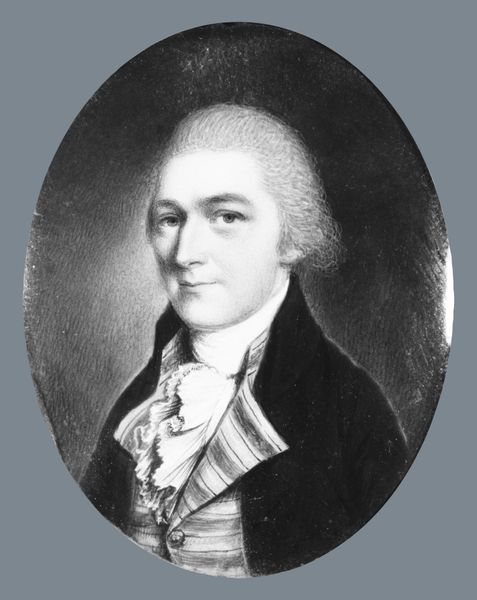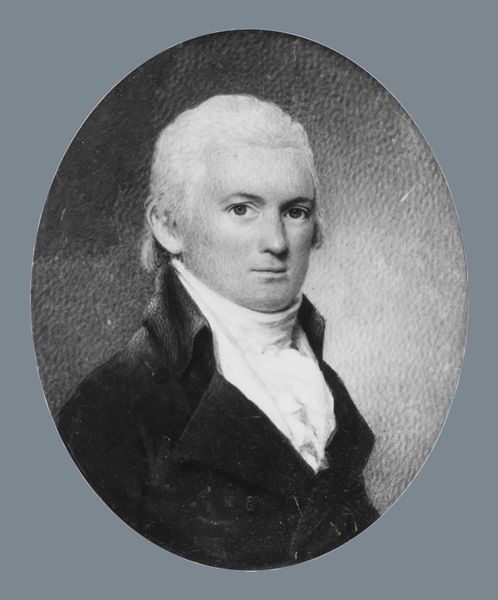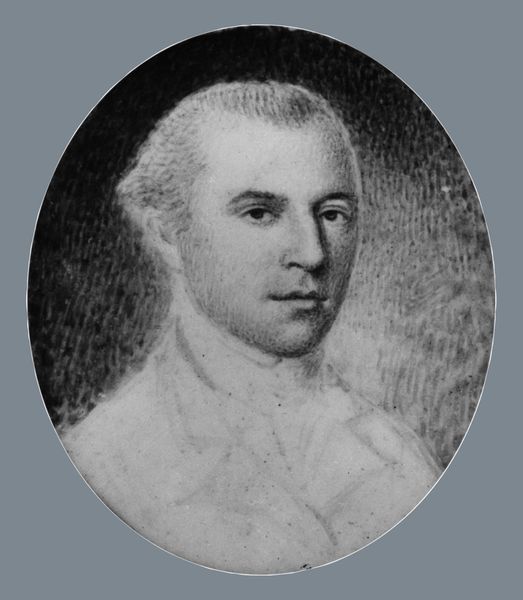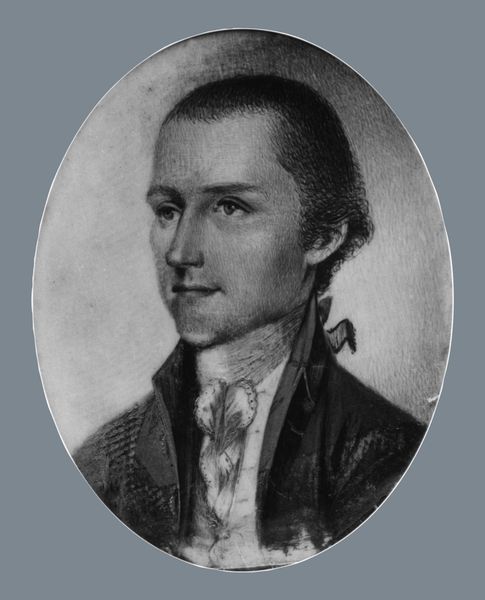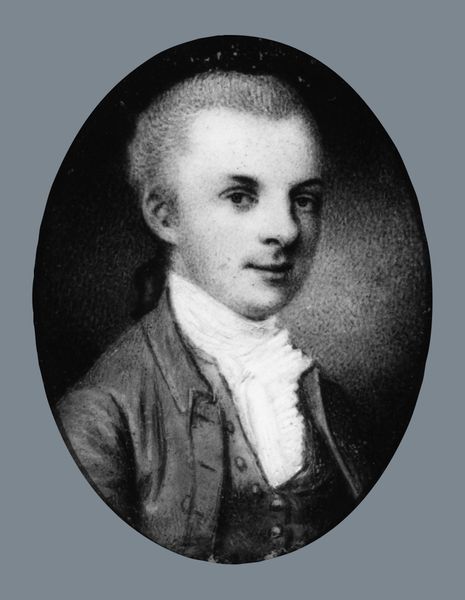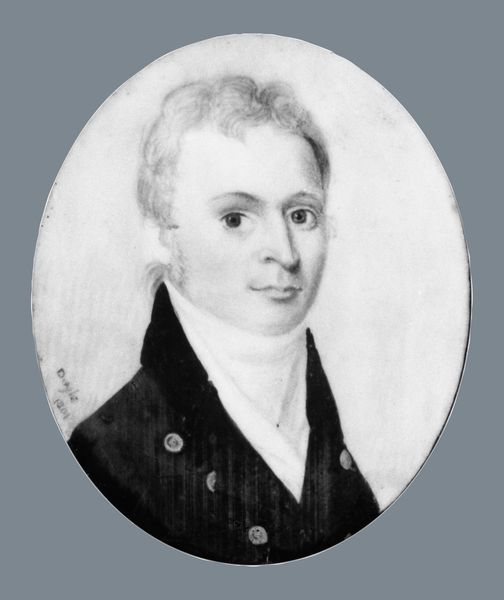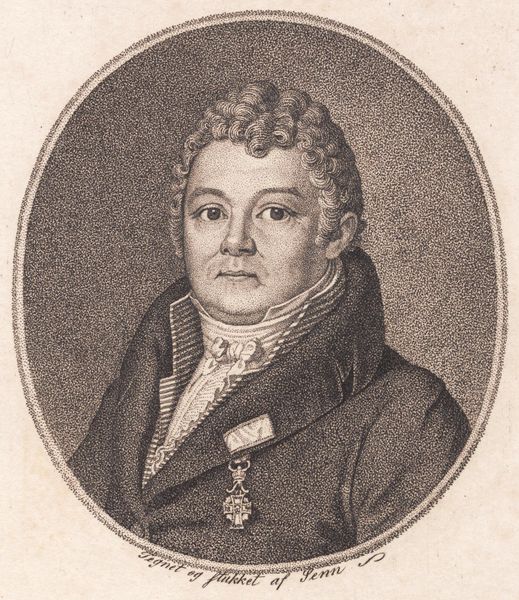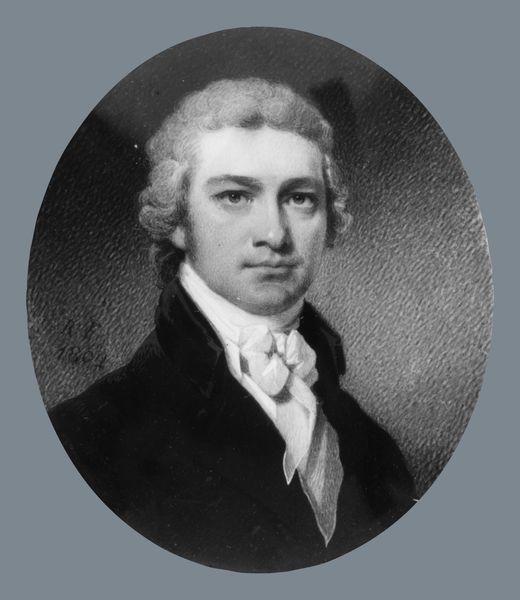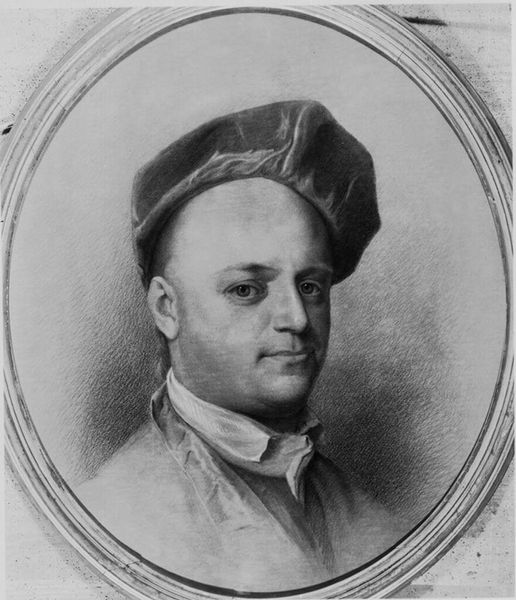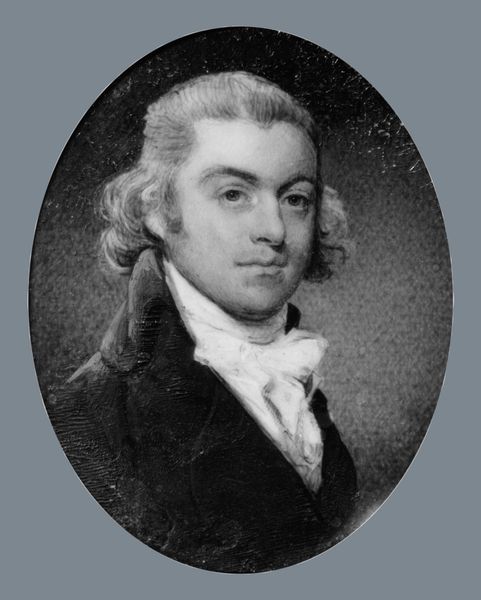
painting
#
portrait
#
neoclacissism
#
portrait
#
painting
#
academic-art
Dimensions: 1 3/4 x 1 3/8 in. (4.4 x 3.5 cm)
Copyright: Public Domain
Editor: So, this is Charles Willson Peale's portrait of Arthur St. Clair, painted around 1780. It's quite a small painting. I'm immediately struck by how...reserved he looks. Almost austere. What do you see in this piece? Curator: Beyond the formal portrait of a military man, I see layers of coded information that spoke volumes to its 18th-century audience. Consider the choice of clothing; it conveys his social standing and profession. But, beyond that, what about what is missing? Editor: Missing? Well, he's not surrounded by battle scenes or anything like that... It’s just him. Curator: Precisely. It’s an intentional omission. Consider the psychological weight. Neoclassical art favoured clarity, reason, and order, reflecting the values of the Enlightenment. What does it say when St. Clair is reduced to an ideal, a form without that explicit historical context? Editor: It almost feels like they are trying to create an image, a myth even. He isn’t a person, he is a concept of a person. Curator: That’s it exactly. This portrait aimed to shape memory and ensure St. Clair occupied a specific place in the collective consciousness of the time, just as the nation itself was taking shape. But who gets to decide how those images take shape, I wonder? Editor: This really shifts how I see these older portraits. I always looked for a direct likeness, but there's so much more intention. It is about conveying power through symbols. Curator: Absolutely! And understanding those symbols allows us to decode the cultural memory embedded within the art. There is cultural significance far beyond aesthetics and skill, if you care to go looking for it.
Comments
No comments
Be the first to comment and join the conversation on the ultimate creative platform.
